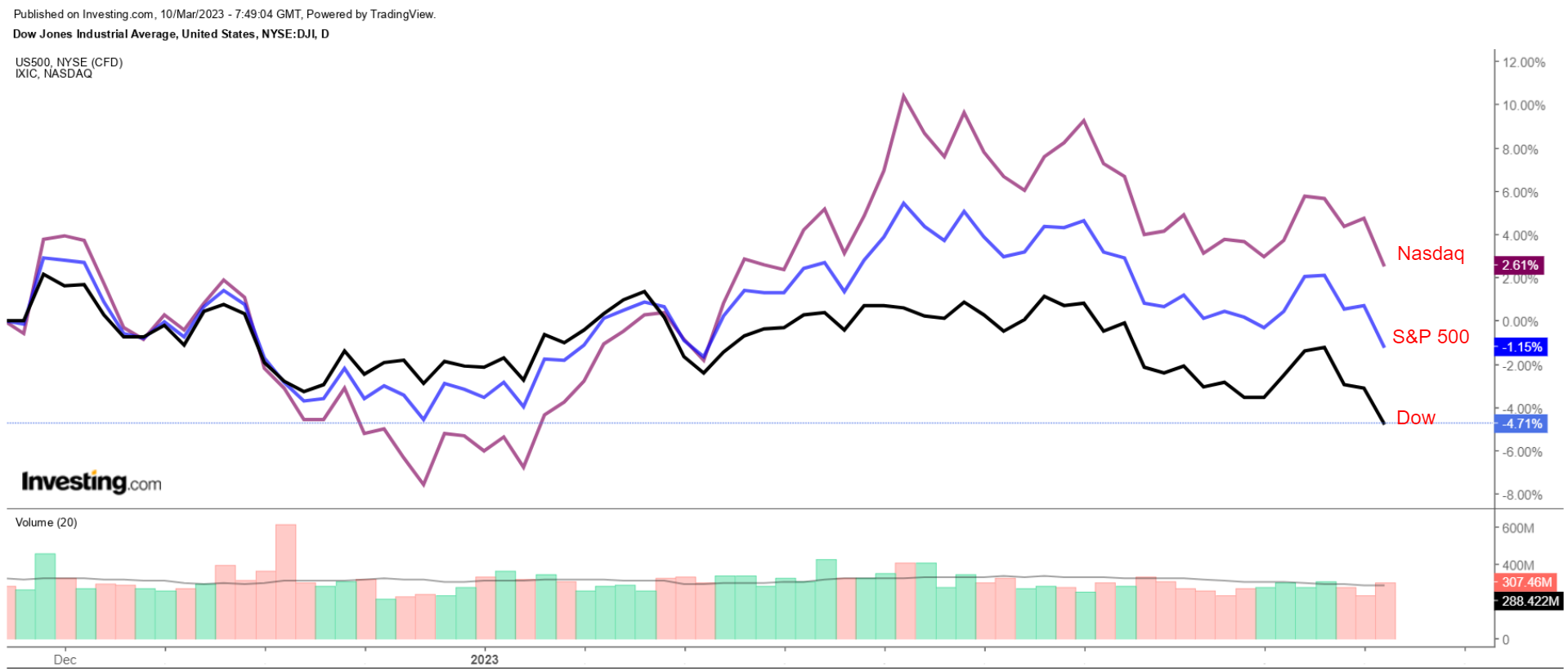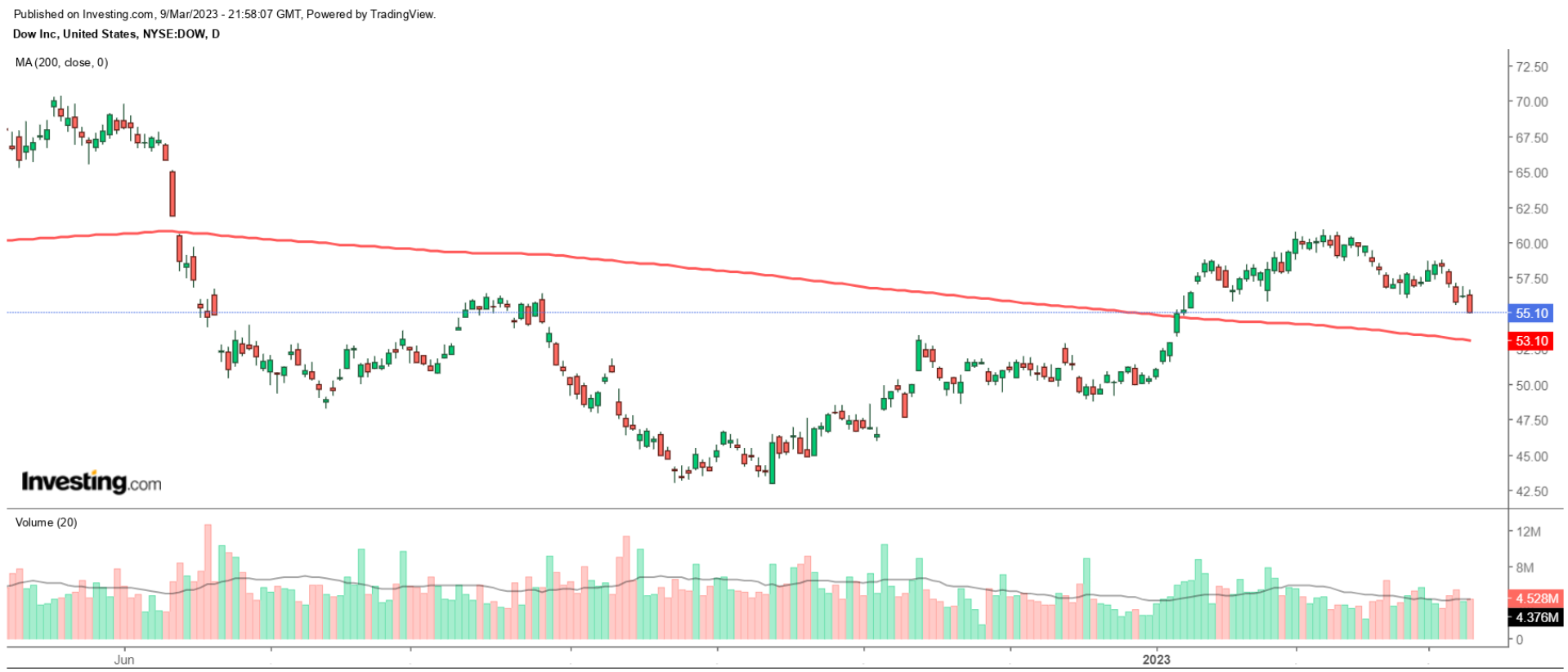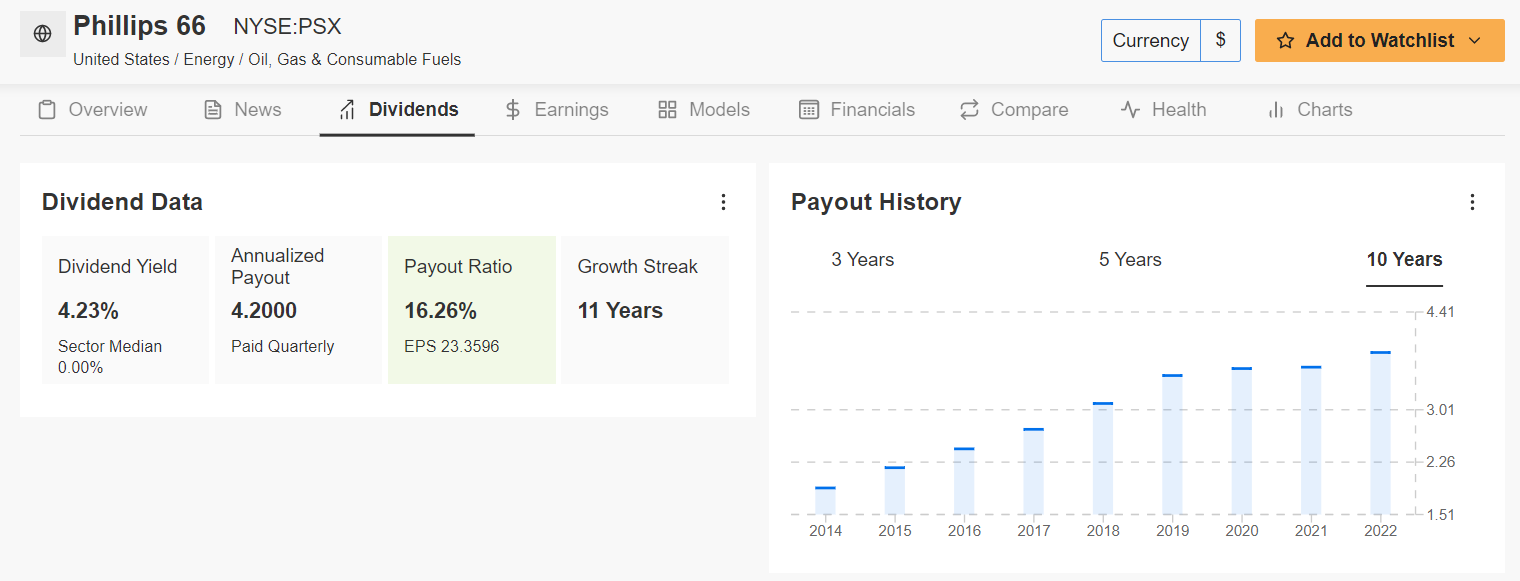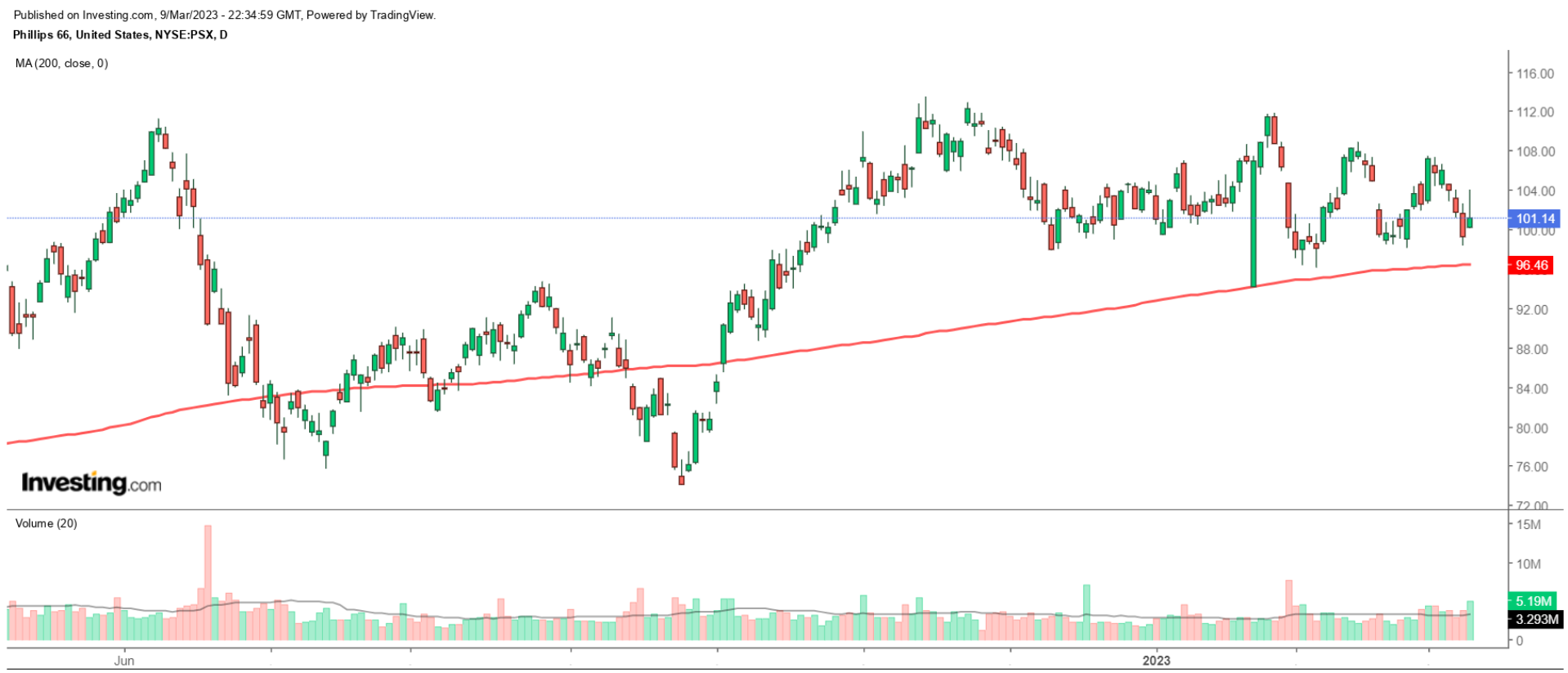- Stocks have been rattled this week following hawkish remarks from Federal Reserve Chair Jerome Powell.
- Investors now expect the Fed to hike rates even more aggressively than expected, risking recession to tame sticky inflation.
- I recommend buying shares of Dow Inc. and Phillips 66 to weather the Fed-induced turmoil thanks to their growing dividend payouts, reasonable valuations, and strong fundamentals.
U.S. stock indices have been rattled in recent days as investors raised their bets the Federal Reserve will have to hike interest rates even more aggressively than already expected following hawkish remarks from Fed Chairman Jerome Powell.
The blue-chip Dow Jones Industrials Average, the benchmark S&P 500, and the tech-heavy Nasdaq Composite are all on track to end the week down by at least 3%.

Powell sent investors fleeing when he told Congress on Tuesday that key interest rates would likely be raised potentially faster than previously anticipated as the central bank seeks to rein in stubbornly high inflation.
Those comments led investors to dramatically raise bets on a 50-basis-point rate increase in March compared with the previous widely held expectation for a 25bps hike before Powell spoke on Capitol Hill.
As of Friday morning (prior to the release of the monthly jobs report), traders were pricing in a roughly 60% chance of a 50bps move at the conclusion of the Fed's March meeting, according to the Investing.com Fed Rate Monitor Tool, up from about 30% at the start of the week. There is also a growing expectation the Fed could push rates to as high as 6.00% by October.
With further Fed-induced turmoil expected in the weeks and months ahead, I recommend buying shares of Dow Inc. and Phillips 66 to weather the ongoing market volatility.
1. Dow Inc.
- P/E Ratio: 8.7
- Dividend Yield: 4.9%
- Market Cap: $39 billion
- Year-To-Date Performance: +9.3%
Between its strong dividend, attractive valuation, pristine balance sheet, and enormous cash pile, I believe that the shares of Dow Inc. (NYSE:DOW) are a smart buy amid the current market backdrop. The global chemicals giant has proven over time that it can sustain high rates and still provide investors with solid payouts thanks to its dependably profitable business model and rock-solid fundamentals.
Dow, which was spun off from DowDuPont in 2019, is among the three largest chemical producers in the world, with operations in more than 160 countries. It provides a wide range of products, including plastics, coatings, and silicones, to customers in market segments, such as packaging, infrastructure, and consumer applications.

Source: InvestingPro
As part of its constant effort to give back more capital to investors, the company returned $4.3 billion to shareholders in 2022, comprised of $2.3 billion in stock buybacks and $2.0 billion in dividends. Dow currently offers a quarterly payout of $0.70 per share, which implies an annualized dividend of $2.80 per share at a yield of 5.08%, one of the highest in the basic materials sector.
Additionally, Dow’s stock trades at a forward price-to-earnings (P/E) multiple of under 9.0, which makes it an absolute bargain compared to other notable chemical companies, such as DuPont de Nemours (NYSE:DD) (32.5 P/E ratio), Air Products and Chemicals (NYSE:APD) (27.8 P/E ratio), and Eastman Chemical (NYSE:EMN) (12.9 P/E ratio).

Shares have run hot in recent weeks, with DOW scoring a gain of almost 30% since reaching a mid-October 52-week low of $42.91, a level last seen in August 2020. The stock ended Thursday’s session at $55.10, earning the Midland, Michigan-based company a valuation of $39.01 billion.
Unsurprisingly, the quantitative models in InvestingPro point to a gain of 28.1% in Dow’s stock over the next 12 months, bringing shares closer to their fair value of $70.59.
2. Phillips 66
- P/E Ratio: 4.3
- Dividend Yield: 4.2%
- Market Cap: $46.9 billion
- Year-To-Date Performance: -2.8%
Phillips 66 (NYSE:PSX) - which made its debut as an independent company when oil giant ConocoPhillips (NYSE:COP) executed a spin-off of its downstream and midstream assets in 2012 - is one of the nation’s biggest energy manufacturing and logistics firms.
Its core business operations involve processing, refining, transporting, delivering, storing, and marketing crude oil, natural gas, natural gas liquids, and refined petroleum products, such as gasoline, distillates, and renewable fuels.
In my view, the Houston-based diversified oil company is a solid name to own amid the current environment, considering its ongoing efforts to return excess cash to shareholders, regardless of economic conditions.

Source: InvestingPro
With a record amount of cash on hand, Phillips 66 - which has raised its annual dividend payout for 11 consecutive years - returned $3.3 billion to shareholders in 2022. The oil refinery recently approved a roughly 8% increase in its quarterly cash dividend from $0.97 to $1.05 per share, beginning in the current quarter.
The new dividend results in an annualized cash payout of $4.20/share, up from $3.88 presently. At the time of writing, PSX stock yields a market-beating 4.15% at Thursday's closing price, which is above the U.S. 10-year Treasury yield of about 3.80% and more than double the 1.58% implied yield for the S&P 500 index.
The company also lifted its share repurchase program by $5 billion, reflecting its growing commitment toward improving shareholder value thanks to its strong balance sheet and expected free cash flow growth.
In addition to its substantial dividend payout and stock buyback program, Phillips 66 is also attractive because of its inexpensive valuation. The energy firm trades at just 4.3 times forward earnings, a significant discount when compared to the broader market average.

PSX closed at $101.14 last night, earning it a valuation of just under $47 billion. Shares of the Texas-based oil and gas company have risen 27.5% in the past year, bolstered by a sharp rise in energy prices in 2022.
As expected, the average fair value for Phillips 66’s stock on InvestingPro, according to several valuation models - including P/E multiples - implies a 27.9% upside from the current market value.
***
Disclosure: At the time of writing, I am short on the S&P 500 and Nasdaq 100 via the ProShares Short S&P 500 ETF (SH) and ProShares Short QQQ ETF (PSQ). I regularly rebalance my portfolio of individual stocks and ETFs based on ongoing risk assessment of both the macroeconomic environment and companies' financials. The views discussed in this article are solely the opinion of the author and should not be taken as investment advice.
